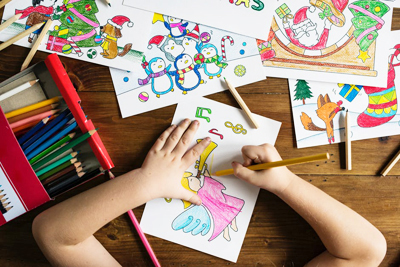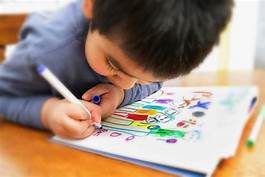Speak Out: Teaching Children to Express Themselves Through Drawing
By Katlyn Oliver
arttimesjournal March 16, 2019
Art is a unique form of nonverbal expression. It is a way that we can show our true feelings, articulate thoughts, perceptions and sensations, without the need for words. For children, drawing is an extremely important way of communication, in a creative way. In fact studies have shown that art can play a very effective way of treating PTSD in adolescents. It is also frequently used in helping children with autism and Aspergers to express their feelings. For all children, art therapy can also be a very effective way of calming body and mind, and improving mood. It provides an outlet for expressing emotion that may otherwise be trapped inside. This is why it is so important to encourage children to draw.
From the age of 5
 |
As soon as your child can securely hold a pencil, ask them to draw what they see. It might be a toy, some food, or a picture of their house - it doesn't have to be anything complicated. Observation is an important technique when it comes to art, because real skill comes in simply drawing what we can see. Practice with them drawing simple shapes, circles, straight lines, and squares shows them how to translate these shapes into everyday objects and faces. Even, better encourage your child to look in the mirror and draw their own face to show how they are feeling. Even at this young age, children will be able to draw facial expressions, even if it is a simplistic way. It will help them to talk about if they are feeling happy or sad.
From the age of 8
From this age, children have the dexterity to be able to use a variety of
mediums to create images, from charcoal and chalks, to paint. You can
encourage them to use these different types of mediums to enhance their
drawings. For instance, consider charcoal; it can be used to create
dimension, shading and depths of black. It can also be used to draw more
complex images, filled with passion and emotion. Give children the
opportunity to study real-life subjects, animals, people, pets - focusing
on faces in particular. In specifically, ask them to consider where the
light and shadows lie - it can help them begin to draw accurately.
From the age of 10
 |
Ten-year old children can draw with a real maturity, understanding how the use of color can reflect emotion in their pictures. When they are drawing, encourage the use of colored pens, paints and pencils to create outlines. This kind of observation is more a reflection of real life, as nothing comes with a black line all the way around it. Using a wide variety of color is an excellent way of expressing the emotions that we are feeling. It can open up definite cognitive channels of communication and help the brain to process feelings in a constructive way.
Drawing is a sensory experience that can be extremely beneficial to
children. It gives them a creative outlet to express feelings that they may
not yet be mentally equipped to discuss verbally. Through the medium of art
children can help improve their health and wellbeing in a positive and
constructive way.
